Welcome to Season 2 of the Human Longevity Podcast!
This season, we are going to use the 12 Hallmarks of Aging as a container to guide some of our conversations and special guests we will have on the show.
What are the Hallmarks of Aging?
Before we dive into the nitty-gritty of Genomic Instability, let’s first understand what the hallmarks of aging are. In 2013, a seminal article in the journal Cell outlined nine biological hallmarks that contribute to the aging process. These hallmarks act as a framework for understanding the complex biological changes that occur as we age, from the cellular level up to the whole organism. They provide a comprehensive overview of the deteriorative processes that lead to the common diseases associated with aging. In 2023, they were expanded to include 12 markers in total: genomic instability, telomere attrition, epigenetic alterations, loss of proteostasis, disabled macroautophagy, deregulated nutrient-sensing, mitochondrial dysfunction, cellular senescence, stem cell exhaustion, altered intercellular communication, chronic inflammation, and dysbiosis. They are all interconnected and what affects one, impacts the whole. Yet it is in the deep dive of each hallmark that researchers are finding breakthroughs and solutions to slow down the rate and pace of aging so 100 really can become the new 60!
Hallmark 1: Genomic Instability
Now, let’s focus on the first hallmark: Genomic Instability. At its core, genomic instability refers to the increased rate of mutations within our DNA as we age. Our DNA is the blueprint for all the biological processes in our body. However, over time, this blueprint can accumulate errors or ‘typos,’ leading to malfunctioning cells and, ultimately, the various signs and symptoms of aging.
The Science of Genomic Instability
The science behind genomic instability is intricate. As we age, our bodies are exposed to a range of environmental and internal factors that can damage our DNA. This damage can come in many forms, such as breaks in the DNA strand or incorrect DNA replication. Our bodies have mechanisms to repair this damage, but as we age, these systems become less effective, leading to the accumulation of genetic errors.
Causes and Sources of Genomic Instability
Several factors contribute to genomic instability. Environmental toxins, pollutants, UV radiation from the sun, exposure to certain chemicals, and lifestyle choices like smoking or poor diet can all lead to DNA damage. Even the process of metabolism, necessary for life, can produce byproducts that damage DNA. These factors create an environment where ‘typos’ in our genetic material can accumulate.
What Can You Do To Reduce the Genomic Load and Create Stability for Your DNA?
Detoxification or the reduction and removal of the toxic load on your body can positively support DNA stability. This can be done in several simple ways.
- Lymphatic Drainage here is a great video to get you started.
- Reduce inflammatory foods, drinks, elicit drugs, and stressors that feel as though they overload your system.
- Increase your consumption of phytonutrients. These are compounds found in fruits and vegetables that provide various health benefits. Examples include lycopene in tomatoes, resveratrol in grapes, and flavonoids in blueberries, ECGC found in Green Tea, dark green leafy and cruciferous veggies. These compounds help protect the DNA from damage and support the body’s natural repair mechanisms. and can aid in liver detoxification and can lower inflammation.
- Move more- work up a sweat to move the toxins out. Regular physical activity, particularly at zone 2 and zone 3 heart rates, is beneficial for promoting genomic stability. Exercise at these intensities enhances cardiovascular function and aids in detoxification processes, helping to rid the body of substances that can lead to DNA damage.
- Get hot- enjoy the heat from a sauna. It can help with detoxification, encouraging the body to sweat out toxins.
- Drink lots of clean, filtered H2O ( 1/2 of your body weight in ounces).
These are just a few ways to get started. If you want to access our in-depth 10 day Longevity Detox Guide, click here to download your copy now.
Invitation to Self-Exploration:
With these ideas in mind, take a moment to consider the myriad of ways you interact with your environment daily. From the foods you eat to the water you drink, the air you breathe, and even the relationships you maintain—each of these can contribute to your body’s toxic burden. Becoming aware of these interactions is the first step toward understanding your own level of genomic instability.
Sources of Toxins:
Every day, we’re exposed to various toxins that can impair our health and contribute to a pro-inflammatory environment. Consider the pesticides on non-organic produce, contaminants in drinking water, air pollution from traffic and industrial activities, and even emotional stress from toxic relationships or work environments. These factors can all lead to increased DNA damage and contribute to the aging process.
The Power of Choice:
Understanding that slowing the aging process is a matter of choice is empowering. You don’t have to overhaul your life in a day. Start by noticing what you can reduce or remove from your life. Can you choose organic produce to decrease pesticide exposure? Can you find ways to reduce stress and remove toxic relationships? Every small choice contributes to a larger impact.
Strategies for Detox Support:
Once you’ve begun to reduce your exposure, consider what you can replace or replenish your system with to support detoxification. Increased hydration is essential for helping your body flush out toxins. Supporting your liver, the primary organ responsible for detoxification can be as easy as downloading our free 10 day detox guide to get you started.
Foods, Herbs, and Supplements:
Certain foods, herbs, and supplements can aid in the detoxification process. Consider incorporating foods rich in phytonutrients, like berries, nuts, and seeds, which can help repair DNA damage. Herbs like milk thistle and dandelion root support liver health, while supplements like N-acetylcysteine (NAC) can boost the body’s levels of glutathione, a critical antioxidant.
As we wrap up, remember that small actions over time add up. Your journey towards a longer, healthier life doesn’t have to be overwhelming. By becoming aware of your interactions with your environment, making informed choices, and gently supporting your body’s natural detoxification processes, you’re taking significant steps toward a future of health and longevity. Embrace the journey, celebrate each choice, and envision the vibrant life you’re creating with each step forward.
#GenomicInstability #AgingScienc #DNAHealth #LongevityTips #HealthyAging #LifeExtension #AntiAging #WellnessJourney #DetoxifyYourLife #Phytonutrients #LifestyleSolutions #OptimizeYourLife #LiveLongerBetter #YouthfulLiving #longevitydetox #antiaging #lifespan #humanlongevity #longevitypodcast #hallmarksofaging #detoxyourdna







